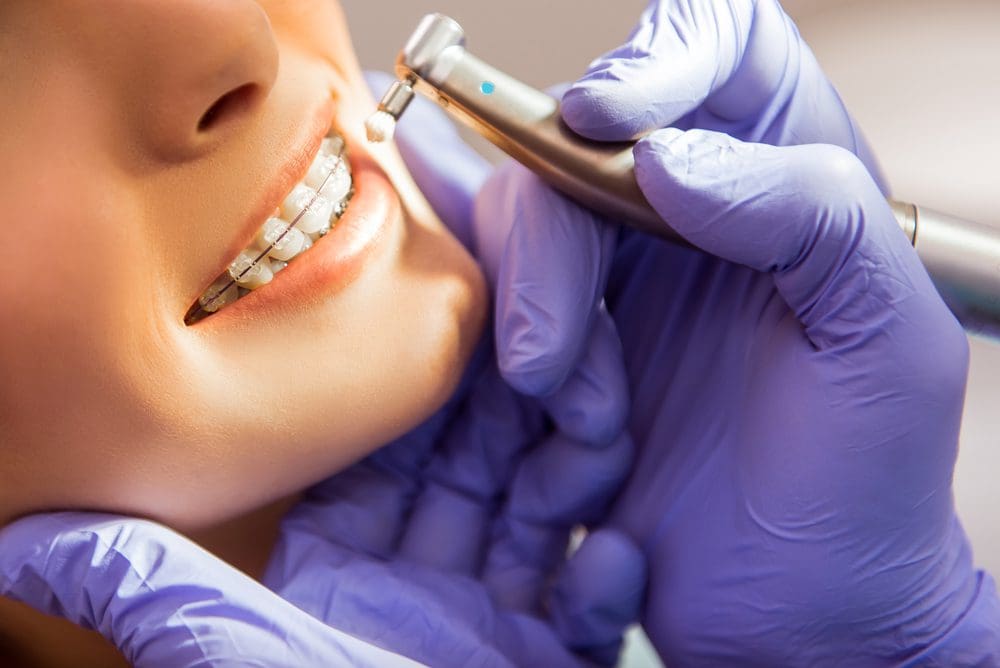How Cumming Orthodontics Can Change Your Smile with Invisalign and Braces
Wiki Article
Comprehensive Overview to Orthodontics Treatments for Dealing With Oral Imbalances
In the realm of orthodontics, the journey to accomplishing a flawlessly aligned smile involves a myriad of procedures customized to deal with oral misalignments. From conventional dental braces to unnoticeable aligners and even medical alternatives, the field of orthodontics provides a series of services to attend to differing levels of oral abnormalities. Understanding the complexities of each procedure, including their devices, advantages, and possible downsides, is essential in making informed choices regarding one's orthodontic therapy. As we browse via the thorough overview to orthodontic treatments for remedying oral imbalances, the detailed information of each approach will certainly unravel, losing light on the course towards a practical and unified dental positioning.Orthodontic Procedures Summary

Along with standard dental braces and clear aligners, orthodontists may additionally recommend various other interventions like headgear, palatal expanders, or retainers to attend to specific alignment issues (cumming aligners). These procedures are customized to every client's one-of-a-kind needs and might entail a combination of therapies to attain the wanted results. Routine changes and monitoring are vital parts of orthodontic treatment to make sure development is on track and to make any kind of required adjustments in the process. By undergoing orthodontic procedures, people can not only achieve a straighter smile however additionally improve their total oral health and wellness and function.
Conventional Braces: How They Work
When thinking about orthodontic therapies for dental misalignments, typical dental braces stand out as a tried and true method for fixing teeth positioning. Traditional dental braces are composed of braces, wires, and bands that work together to use continuous stress on the teeth, progressively relocating them right into the wanted alignment.
As stress is used to the teeth through the braces, the bone surrounding the teeth is reshaped to support the brand-new tooth placements. People will need regular modifications at the orthodontist's workplace to ensure the braces continue to apply the correct pressure for effective teeth motion.
Undetectable Aligners: Pros and Disadvantages
Undetectable aligners use a hassle-free and very discreet option to conventional braces for fixing dental imbalances. These clear, custom-made trays are virtually invisible when put on, making them an enticing choice for individuals seeking an extra cosmetically pleasing orthodontic therapy. One of the primary benefits of invisible aligners is their removability, permitting less complicated upkeep of dental hygiene compared to typical dental braces. Clients can remove the aligners prior to consuming or brushing their teeth, reducing the threat of food obtaining stuck in the device and streamlining the cleaning process.
Surgical Orthodontic Options
Surgical interventions in orthodontics present feasible choices for addressing complex dental imbalances that might not be properly resolved with standard orthodontic therapies. While standard dental braces and undetectable aligners can fix numerous orthodontic problems, specific cases require medical treatment to accomplish optimal results. Surgical orthodontic alternatives are typically advised for extreme malocclusions, considerable jaw inconsistencies, and cases where the underlying bone framework requires modification to achieve proper placement.One typical surgical orthodontic treatment is orthognathic surgical procedure, which includes repositioning the jaws to correct functional concerns such as find local dentist problem speaking or eating. This surgical treatment is frequently performed in cooperation with an orthodontist who helps line up the teeth before and after the treatment. Surgical orthodontics may additionally include treatments to subject impacted teeth, eliminate excess gum cells, or improve the jawbone to produce an extra harmonious face profile.
Prior to thinking about surgical orthodontic choices, patients undertake an extensive assessment to identify the need and possible benefits of such treatments. orthodontics. While surgical treatment might appear overwhelming, it can substantially boost both the function and aesthetics of the smile in situations where conventional orthodontic therapies fall short
Retainers and Post-Treatment Care

Failure to comply with post-treatment care instructions can result in relapse, where the teeth progressively relocate back in the direction of their initial settings. Regular retainer wear, excellent dental hygiene, and regular dental exams are essential for keeping the outcomes accomplished via orthodontic surgical procedure and making sure the long-lasting stability of the corrected oral placement.
Final Thought
Finally, orthodontic procedures use different options for correcting oral imbalances. Conventional braces make use of metal brackets and wires to change teeth right into proper alignment. Unseen aligners supply a more very discreet option yet might not be ideal for all instances. Surgical orthodontic alternatives are readily available for a lot more severe misalignments. Retainers are frequently utilized post-treatment to keep the new positioning. On the whole, orthodontic procedures can efficiently improve oral health and wellness and visual appearance.As we navigate with the comprehensive guide to orthodontic treatments for correcting dental misalignments, the detailed information of each technique will certainly unravel, shedding light on the course towards a practical and unified oral alignment. - orthodontics
One of the most typical orthodontic therapies is the usage of dental braces, which This Site are composed of steel brackets and cables that apply mild stress to gradually shift teeth into the preferred placement.When considering orthodontic treatments for oral imbalances, typical braces stand out as a time-tested technique for correcting teeth positioning. Furthermore, unseen aligners might not be ideal for complex orthodontic issues that require more significant teeth activity, as they are typically recommended for mild to moderate cases. Retainers are customized orthodontic gadgets created to hold teeth in their remedied settings after the conclusion of orthodontic treatment.
Report this wiki page